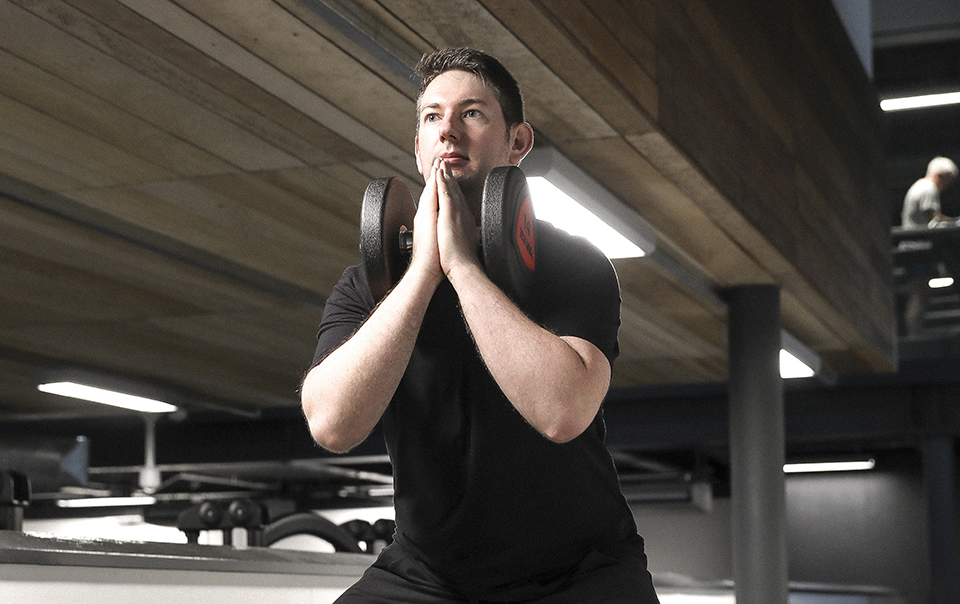

Over the next four weeks we’re going to look at the basics of four main movements and the correct execution, and if you are a subscriber we’ll be looking at some additional aspects on each of these movements to really increase your progress!
To begin, we’ll look at the squat.
These days the vast majority of people who’ve been to a gym or who have bought and followed a workout plan have squatted.
However, it’s rare that you see a good squat because it’s rare that you see someone actually taking the time the practice the technique of squatting before they attempt to load it.
As far as guides go this is a good one on squat basics:
How to Squat with Proper Form: The Definitive Guide
The problem, however, with any guide on movement basics is that there are literally dozens of aspects of this movement that can deviate from the way you can actually move. Most people are too stiff and immobile to squat like that. They tend to push their butts right out on the way down, or work in a very shallow range. A lot of people can’t get to ninety degrees and remain in good form either. And as for their upper bodies, they often end up with their chest and head looking at the floor.
And this is where I take issue with many of these generic programmes and Instagram workouts you see proliferating every gym you could choose to step into. Squatting is a fundamental movement. If you can’t do it well you need to practice and perfect it before you start loading it with weight or attempted to put a high number of reps through the movement. Most programmes don’t take this into consideration, and nor do most exercisers. You have to respect the exercise in order to get the best results from it. Shallow squats can lead to overworked quads and underworked glutes, back pain and increasingly bad posture.
That being said, working on a movement doesn’t mean you should avoid doing it until your form is absolutely perfect. There are ways to modify the squat action in order to make the movement more accessible and effective, working around any mobility issues you may have. Taking a wider stance, for example, would lessen the impact tight hips has on the squat. Using heel blocks would negate limited ankle range. Using these things isn’t bad, but you shouldn’t rely on them.
These methods are ways to work on squatting and putting some load through the movement, but ultimately they bastardise the action. This is a trade off that is important to remember, because avoiding loading a squat to perfect form is just as valid as modifying the movement to put some movement through it. There is a need for both at the right time, it is more of a case that it’s important to pick the right time to do it. That being said, improving your movement has to come first. If you can’t get to ninety degrees or below you should prioritise perfecting your squat movement ahead of focusing the loading of the movement.
The other concerning aspect of many online programmes which are available is the way in which they use the squat as a cornerstone movement for weight loss. To be clear, weight loss is primarily driven by creating an energy deficit, meaning consuming less calories than you use per day, resulting in weight loss. However doing this for a sustained period of time will lead to a metabolic slow down, meaning that in order to sustain your weight loss you’d have to cut calories further. In the long term that isn’t sustainable, because where do you go once you go below one thousand calories a day in order to lose weight? If there is any day that you go over this lower figure even slightly you’d gain weight and struggle to take it back off.
Doing exercises which work a lot of the muscles of the body increase the body’s metabolic rate and can help keep it high, even in a deficit state during weight loss. In the long term the dual use of a sensible restrictive diet and whole body training would be the best way for you to lose weight.
So if your metabolism is somewhat protected by squatting and other multi-joint movements why do I have a problem with these programmes including squats in them? Because the intention of them in these programmes is wrong. There isn’t a focus on good movement or on strengthening the action through progressive resistance. Instead there is a focus on output and intensity. Squatting fast with lots of reps, minimising rest periods and training the movement fatigued. This may have a short term benefit for weight loss but it won’t last and will ultimately fail.
It is therefore far better to focus on perfecting the movement first, and then using progressive resistance to load it. Weight loss will come from diet, and muscular tone and strength from the application of squats with good form.
You’ll receive all the latest news, posts and information regarding health and fitness.
You’ll receive all the latest news, posts and information regarding health and fitness.
You’ll receive all the latest news, posts and information regarding health and fitness.